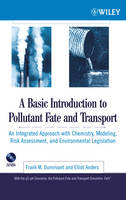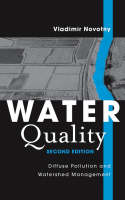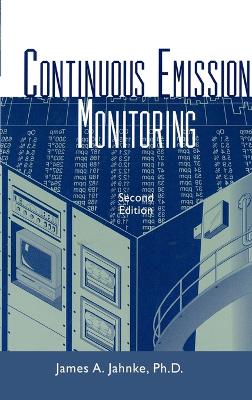Basic Introduction to Pollutant Fate and Transport
Basic Introduction to Pollutant Fate and Transport
An Integrated Approach with Chemistry, Modeling, Risk Assessment, and Environmental Legislation
Anders, Elliot; Dunnivant, Frank M.
John Wiley & Sons Inc
02/2006
504
Dura
Inglês
9780471651284
884
Descrição não disponível.
Preface. To the Instructor. To the Student. To the Environmental Professional. How to Use the Book with Fate and Associated Software. Acknowledgments. Symbols. Glossary. PART I: INTRODUCTION. Chapter 1. Sources and Types of Pollutant, Why We Need Modeling, and Historical Contamination Events. PART II: CHEMISTRY OF FATE AND TRANSPORT MODELING. Chapter 2. Basic Chemical Process in Pollutant Fate and Transport Modeling. Chapter 3. Quantitative Aspects of Chemistry Toward Modeling. PART III: MODELING. Chapter 4. An Overview of Pollutant Fate and Transport Modeling. Chapter 5. Fate and Transport Concepts for Lake Systems. Chapter 6. Fate and Transport of Pollutants In Rivers and Streams. Chapter 7. Dissolved Oxygen SAG Curves in Streams: The Streeter-Phelps Equation. Chapter 8. Fate and Transport Concepts for Groundwater. Chapter 9. Fate and Transport Concepts in Atmospheric Systems. PART IV: RISK ASSESSMENT. Chapter 10. Risk and the Calculation of Health Risk From Exposure to Pollutants. PART V: ENVIRONMENTAL LEGISLATION IN THE UNITED STATES AND EUROPE. Chapter 11. Environmental Laws. PART VI: POLLUTANT CASE STUDIES. Chapter 12. Case Studies of Selected Pollutants. PART VII: SUPPORTING LABORATORY EXPERIMENTS. Chapter 13. Experiments. Appendix I. Glossary of Iris Terms. Appendix II. List of Drinking Water Contaminants and MCLS. Appendix III. List of Contaminants and Their MCLS. Appendix IV. Periodic Table of the Elements. Index.
Este título pertence ao(s) assunto(s) indicados(s). Para ver outros títulos clique no assunto desejado.
uniquely accessible; environmental; pollutant; models; water quality; inhibitor; advancement; software; science; instructional; introduction; transport; basic; tool; firstyear; simple; requires; refreshingly; approach; chemistry; college; subject
Preface. To the Instructor. To the Student. To the Environmental Professional. How to Use the Book with Fate and Associated Software. Acknowledgments. Symbols. Glossary. PART I: INTRODUCTION. Chapter 1. Sources and Types of Pollutant, Why We Need Modeling, and Historical Contamination Events. PART II: CHEMISTRY OF FATE AND TRANSPORT MODELING. Chapter 2. Basic Chemical Process in Pollutant Fate and Transport Modeling. Chapter 3. Quantitative Aspects of Chemistry Toward Modeling. PART III: MODELING. Chapter 4. An Overview of Pollutant Fate and Transport Modeling. Chapter 5. Fate and Transport Concepts for Lake Systems. Chapter 6. Fate and Transport of Pollutants In Rivers and Streams. Chapter 7. Dissolved Oxygen SAG Curves in Streams: The Streeter-Phelps Equation. Chapter 8. Fate and Transport Concepts for Groundwater. Chapter 9. Fate and Transport Concepts in Atmospheric Systems. PART IV: RISK ASSESSMENT. Chapter 10. Risk and the Calculation of Health Risk From Exposure to Pollutants. PART V: ENVIRONMENTAL LEGISLATION IN THE UNITED STATES AND EUROPE. Chapter 11. Environmental Laws. PART VI: POLLUTANT CASE STUDIES. Chapter 12. Case Studies of Selected Pollutants. PART VII: SUPPORTING LABORATORY EXPERIMENTS. Chapter 13. Experiments. Appendix I. Glossary of Iris Terms. Appendix II. List of Drinking Water Contaminants and MCLS. Appendix III. List of Contaminants and Their MCLS. Appendix IV. Periodic Table of the Elements. Index.
Este título pertence ao(s) assunto(s) indicados(s). Para ver outros títulos clique no assunto desejado.






